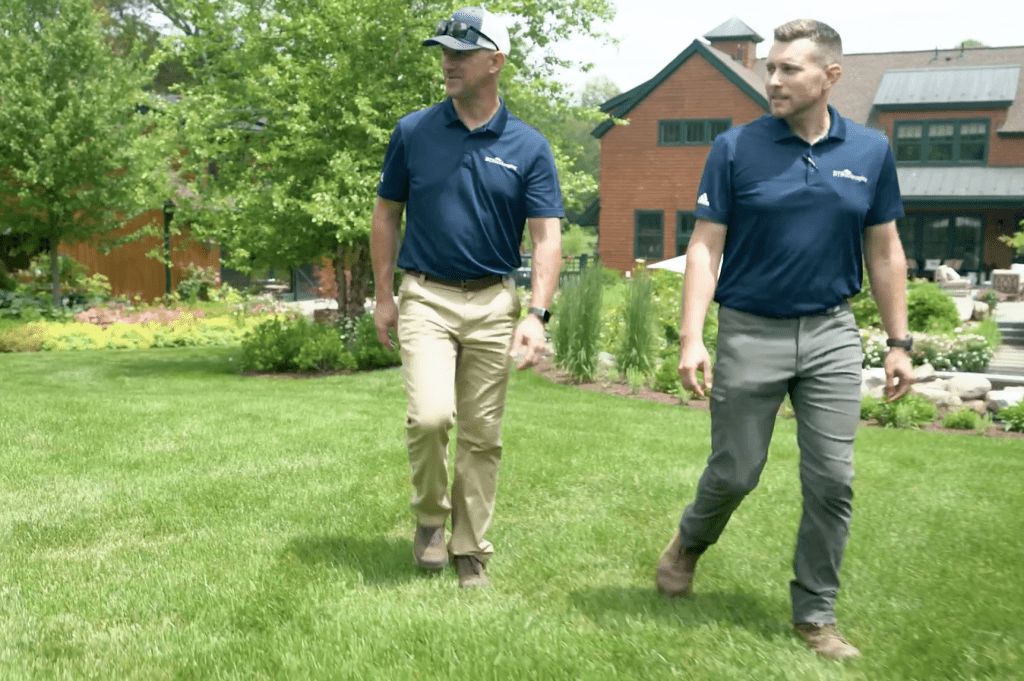
Your customers spend a significant amount of time on social media platforms, so it’s natural to have a presence there as part of your marketing efforts. Taking the time to craft quality social media posts can make potential customers stop scrolling and consider contacting your landscape business.
This calls for professional photos and videos that speak to what a customer can expect if they do business with your company.
“Though we all know that there is more to landscaping than meets the eye and that there is even more to delivering quality landscaping services than just installing something that looks amazing; visuals often play a critical role in customer acquisition,” says Dylan Harper, owner of Forge Marketing Group, LLC.
Types of Posts and Platforms
Corey Halstead, co-owner of HALSTEAD Media, says the key to crafting these types of compelling posts calls for tailoring content and messaging to deeply resonate with your target audience.
“Most companies cater to more than one target audience — for example, design/build, residential maintenance, and commercial services,” Halstead says. “What resonates with one audience may differ significantly for another. It’s crucial to identify the pain points of each audience segment and create content that directly addresses or speaks to those specific concerns.”

Featured: BTS Landscaping, Randolph, New Jersey
Harper says that social media posts are most effective when they address the needs, interests, questions, and expectations of new customers. These will vary based on the type of customer, what services they are seeking and what stage of the buyer’s journey they’re at.
“A key element in resonating with lead generation is consistently staying in front of the right audience throughout their entire buyer’s research journey,” Halstead says. “This repetition is crucial for making a lasting impact on potential customers and achieving measurable results. This is done by layering on paid ads to retarget leads through the pipeline stages. Both posts and ads are needed to drive measurable growth today.”
Facebook and Instagram are popular platforms for posting, but their organic reach is limited. Halstead says that Instagram Stories, Facebook Reels and LinkedIn posts currently have the best organic reach.
“If a landscaping company wants to reach a larger and more targeted audience with its social media posts, then it will need to run paid advertisements on Facebook and Instagram,” Harper says.
Some types of posts that can appeal to potential customers include completed projects, before-and-afters, testimonials and solutions to problems that are related to service offerings.
“Given the abbreviated nature of social media posts, there’s no way that posts can go into the level of detail that is needed to convert leads into customers,” Harper says. “That is the job of the company website and sales team. However, social media should provide bits of information and visuals that give leads a taste of what they can expect and prompt them to visit the website or call the sales team for more information.”
Mistakes to Avoid
Halstead says it’s crucial to refrain from just posting on social media to check a box.
“The return on investment of posting generic content on Facebook each week, devoid of a content strategy and a supported paid strategy, is virtually non-existent when scrutinized through actual data,” Halstead says. “Despite this, many companies still perceive this approach as ‘marketing’ because it used to be effective.”
Harper says there aren’t hard-and-fast rule on how often a business should be posting. Instead, focus on publishing enough posts that address the common needs, interests, questions, and expectations of the intended audiences when they visit your social media pages.

Featured: Troy Clogg Landscape Associates, Wixom, Michigan
“I often observe companies posting without achieving a return on investment because their posts fail to reach their serviceable potential customer base,” Harper says. “It’s crucial to move away from posting just for the sake of posting. The era of sharing random links merely to maintain a posting schedule is long gone.”
Halstead also cautions against only posting content tailored for other contractors.
“While this serves as a valuable networking tool and facilitates learning from peers, the distinction between these types of posts and those aimed at potential customers is often overlooked,” Halstead says. “Many accounts are 100% focused on peer-to-peer content, forgoing the platform’s ability to drive sales. The difference lies in style, voice, targeting, quality, and more. For every post, it’s essential to ask: What is the purpose of this post? Who is the intended audience? Does it align with what we are trying to achieve?”
Harper adds that posting memes, participating in dance or comedic trends, and sharing non-informative reaction videos should be avoided. He suggests running paid ads on Facebook and Instagram to simplify the social media management process.
“Instead of expending effort to continuously create and publish organic (free) social media posts to reach the same limited audience of page followers, a company could run the same post continuously as a paid Facebook and Instagram ad to reach a larger, more targeted audience with higher frequency over an extended period of time,” Harper says.
Generating Bonus Leads
The social media posts you create to attract new leads can also entice new employees. Halstead says a huge amount of your content and messaging can appeal to both audiences.
“Though I recommend creating separate posts for attracting new leads and for recruiting new talent, landscaping companies can kill two birds with one stone by creating posts that describe how the quality and culture of their team translates into the service they provide for customers,” Harper says.
If you decide to take this route, take care that the posts do not end up becoming clunky or unnatural.
“Because each social media post should capitalize on the opportunity to drive clicks to the company website by incorporating a link to a relevant website page, there is an even bigger need to create separate posts for each audience,” Harper says.



